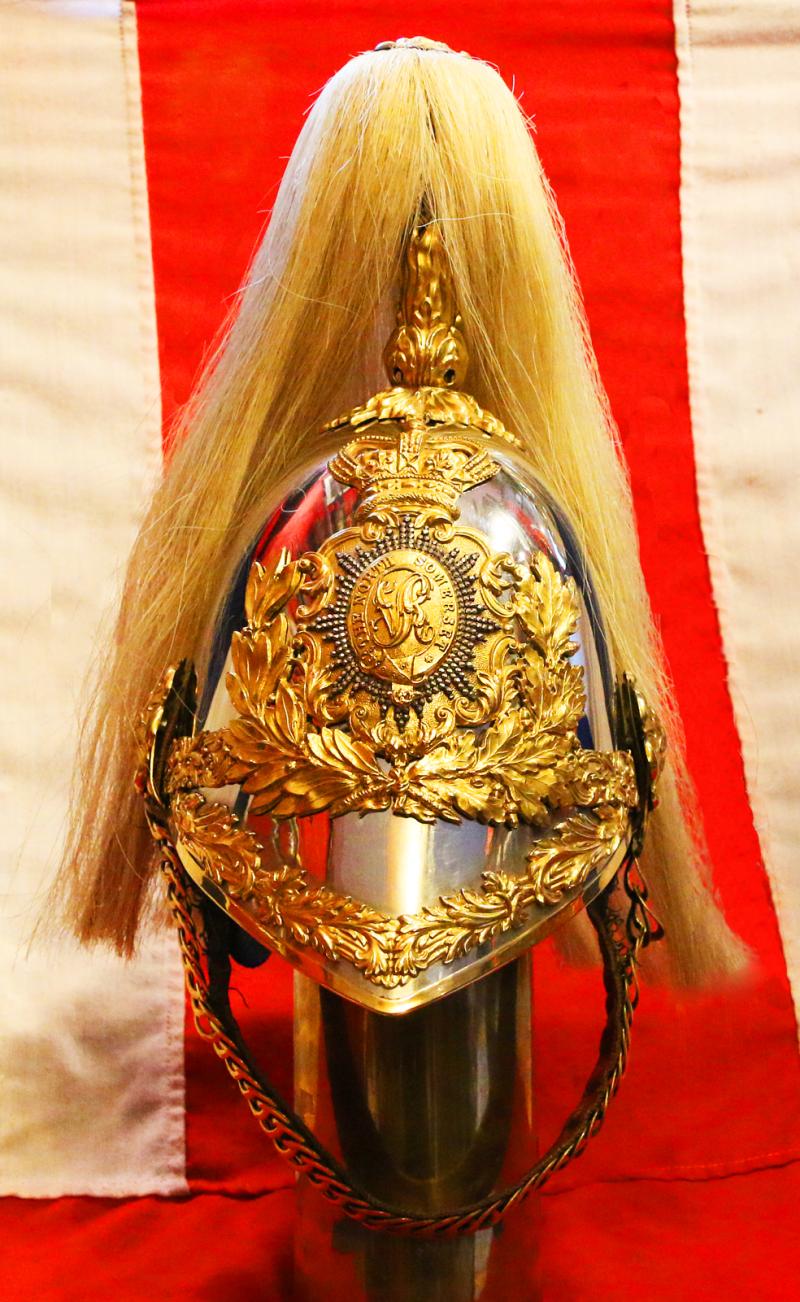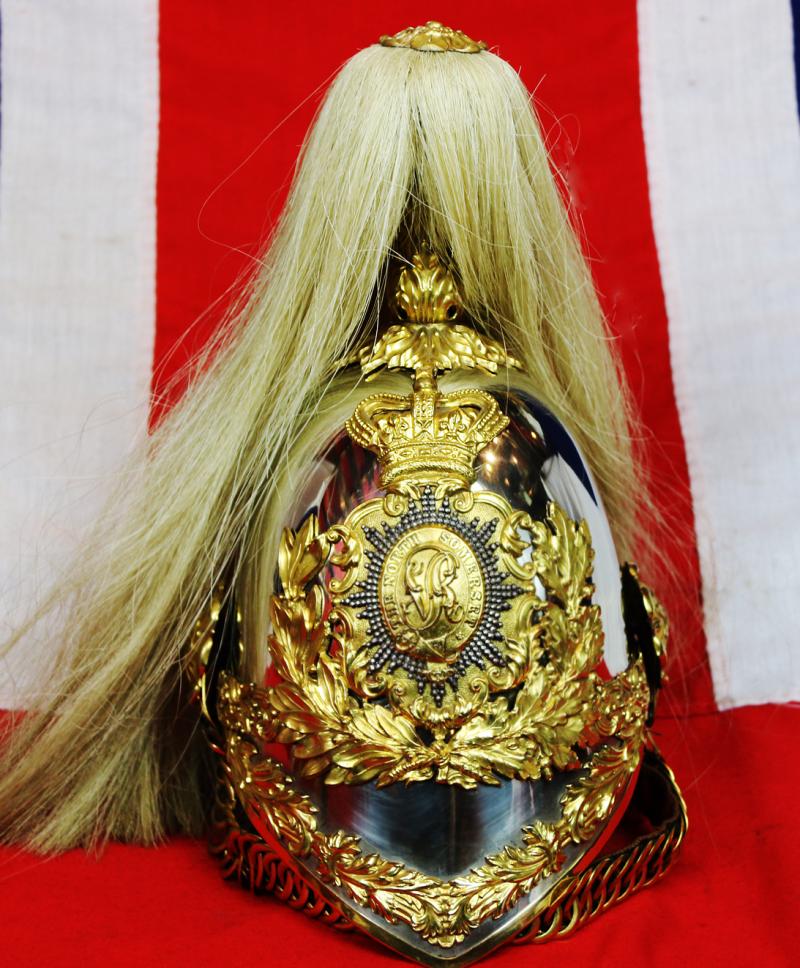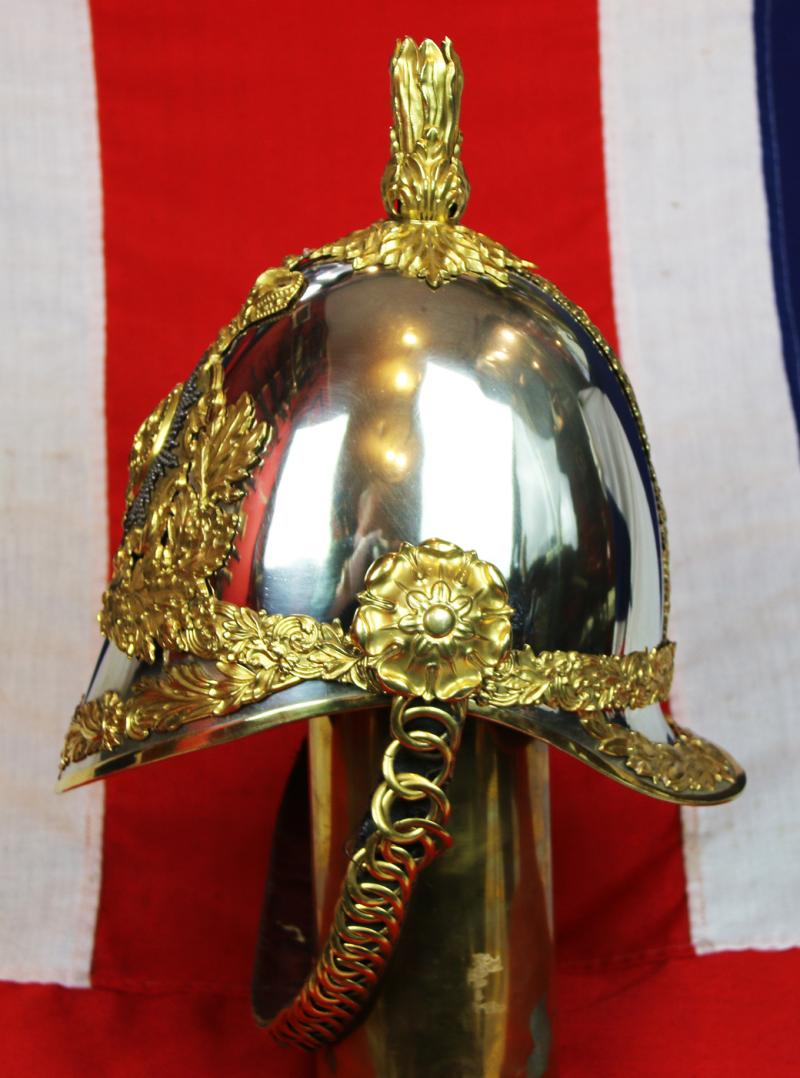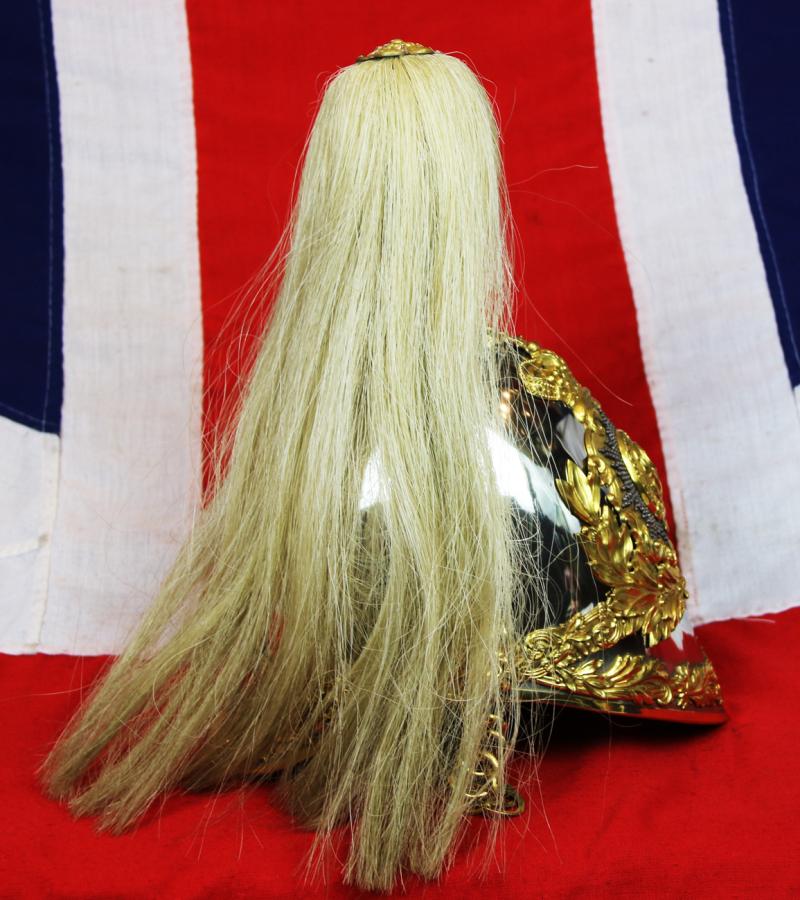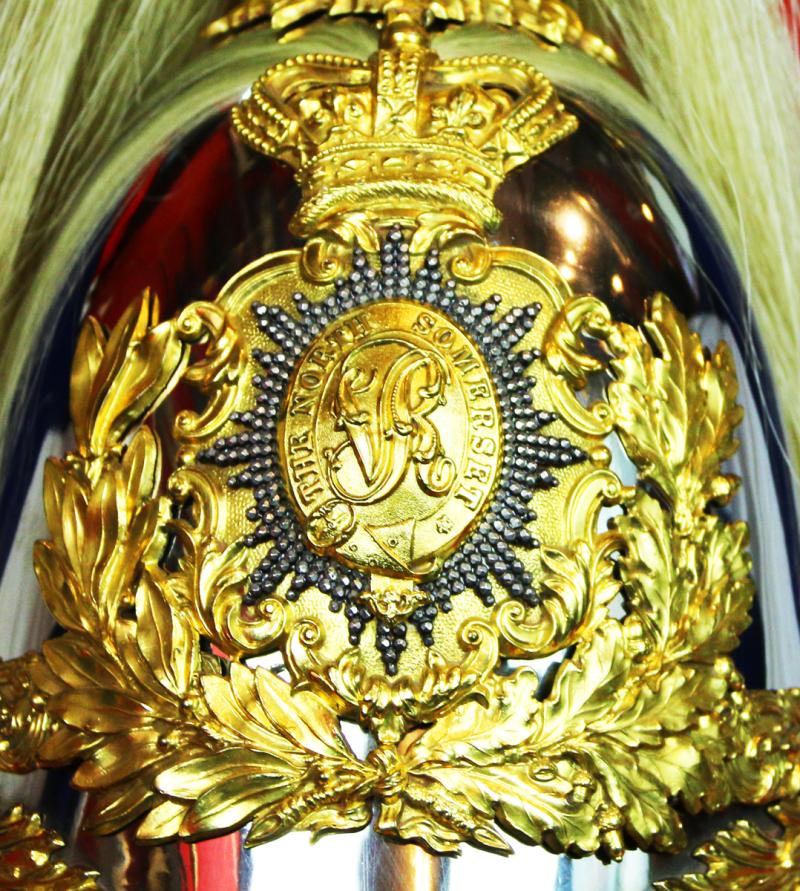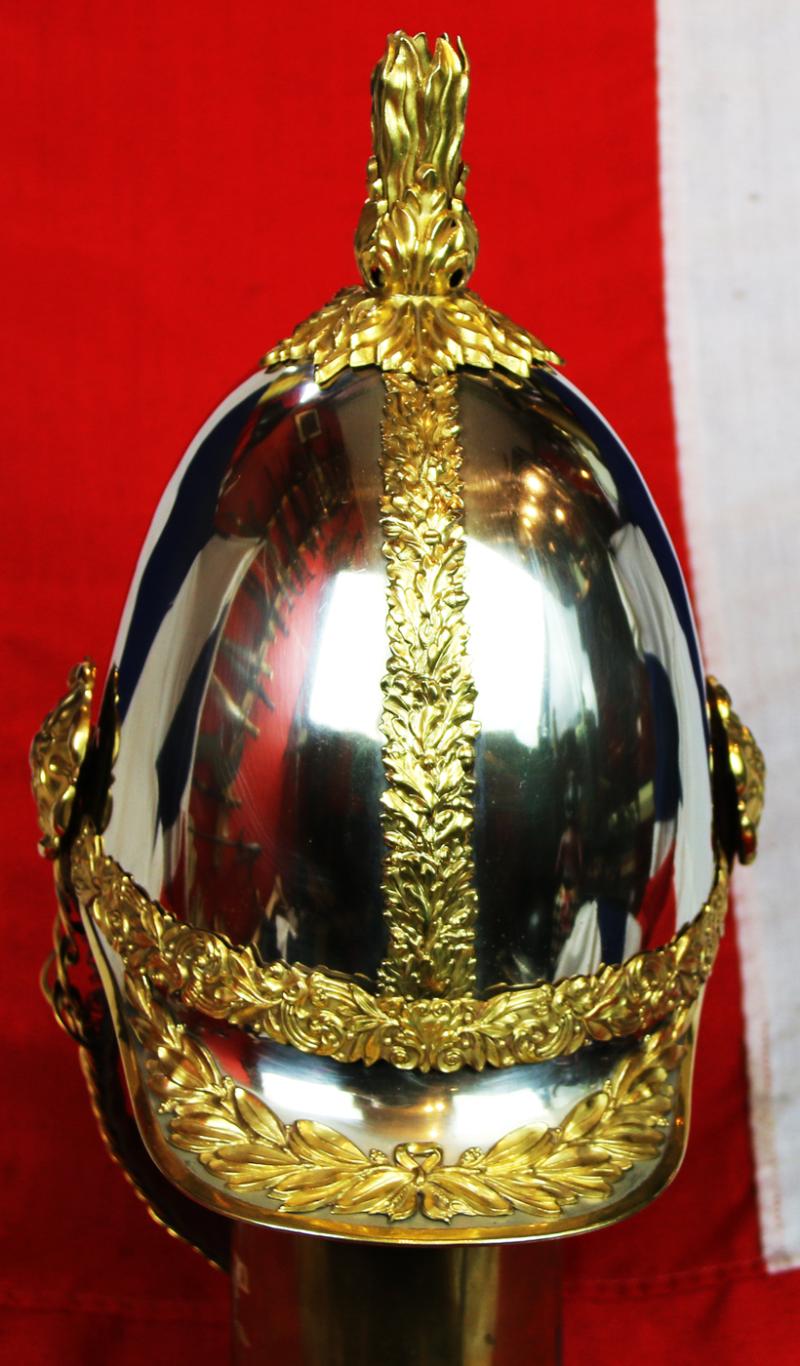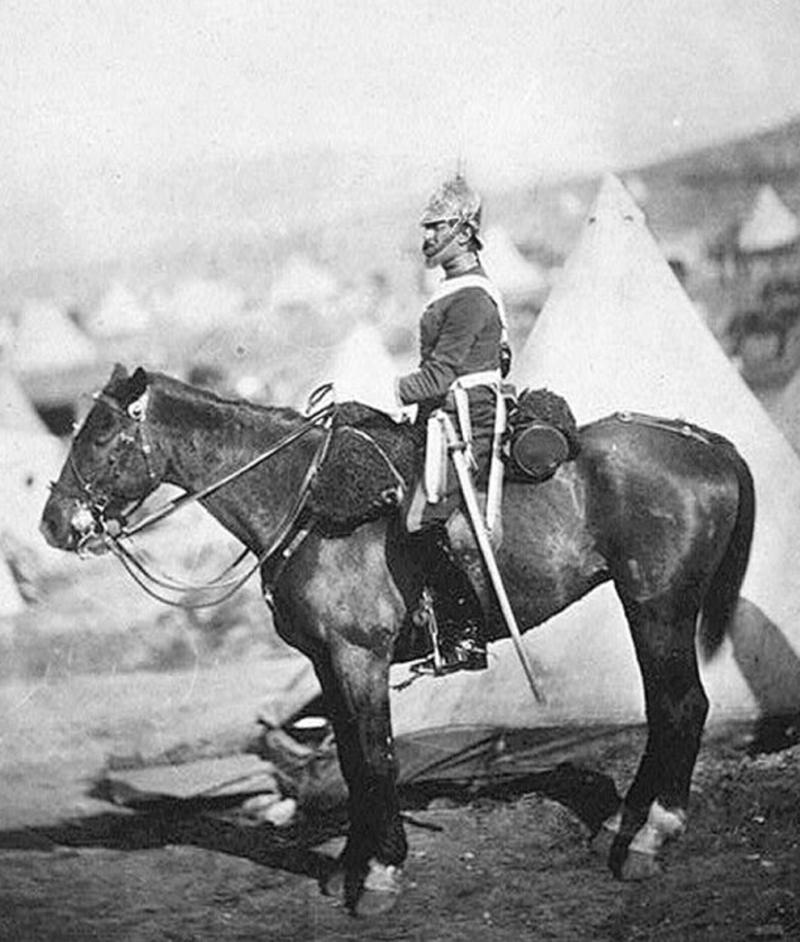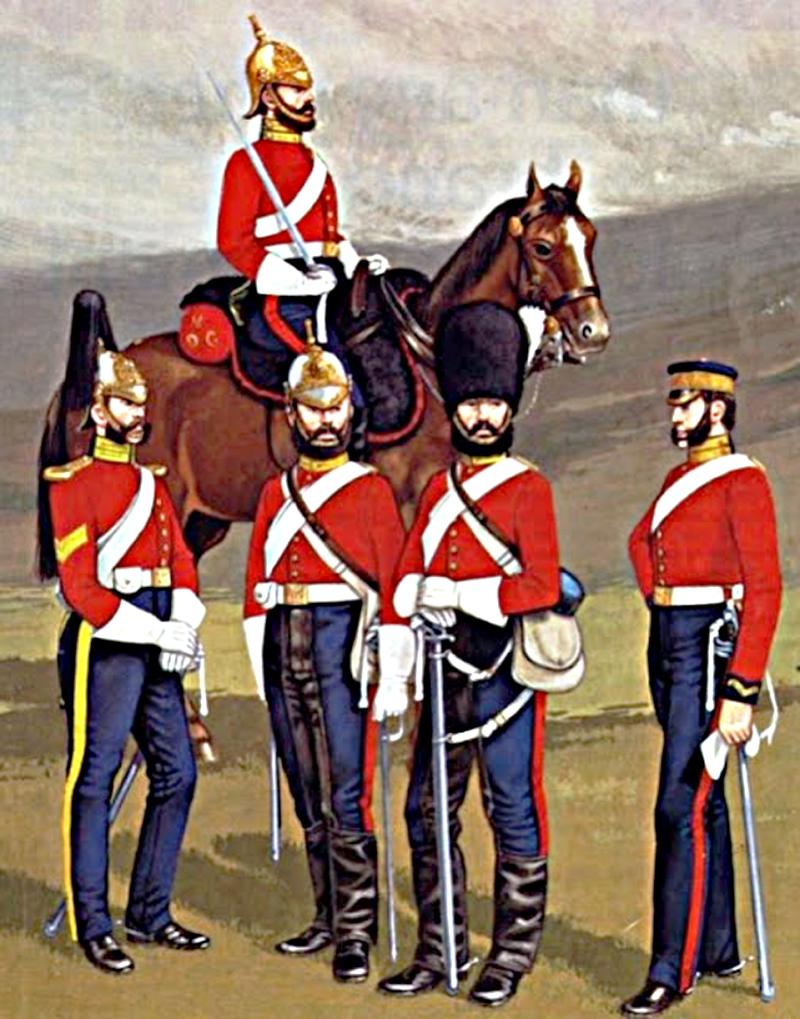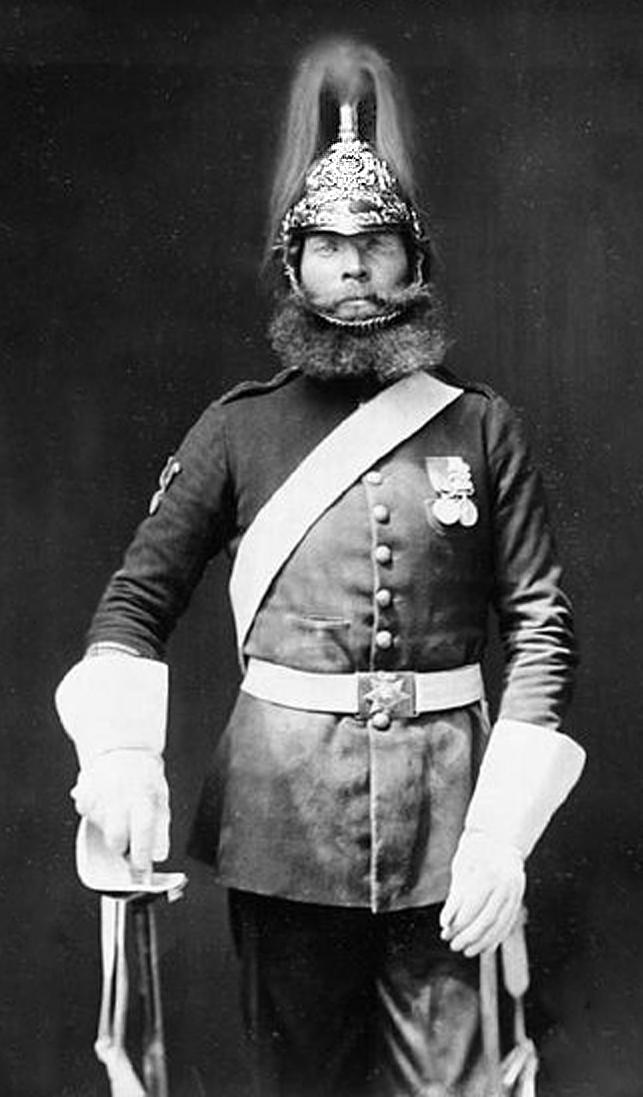A Near Mint And Truly Magnificent, Early Victorian, 1847 Albert Pattern, British North Somerset Regimental Officer's Cavalry Helmet. Possibly The Best Original Example Outside Of The Royal Collection. Original, Crimean War Period
High polished nickle silver skull, stunningly and ornately decorated with applied mercurial gilt floral trim around the full body, visor, and down the rear of the helmet, and especially around the front badge. The badge is a diamond brilliant cut steel eight-pointed silver star on the front which was almost wholly covered by an oval device in gilt, in the centre of which is the Royal Cypher (VR) on a frosted gilt ground with the oval garter surround bearing the regimental title 'North Somerset'. Large rosettes affix the red morocco leather-backed gilt chin scales. Its mercurial flaming torch plume holder, with white horse hair plume, topped by a frosted gilt rose mount, completes the helmet magnificently. The liner is full, and intact.
Formerly from the late collection of one of England's most esteemed military antique collectors and Antiques Roadshow travelling consultant expert for around 30 years, Roy Butler
When in combat or on 'the charge' the plume could be removed. See pictures {painting and original photos} in the gallery of the helmet worn in the Crimea with and without plume.
After Britain was drawn into the French Revolutionary Wars, the government of Prime Minister William Pitt the Younger proposed on 14 March 1794 that the counties should form Corps of Yeomanry Cavalry that could be called on by the King to defend the country against invasion or by the Lord Lieutenant to subdue any civil disorder within the county. A meeting of householders at Frome in Somerset on 2 May 1798 resolved to form a military association to defend the town and country. Its services were accepted on 2 June, and the Frome Troop of Cavalry was formed. Other troops were formed at about the same time at Road, Wolverton, Mells, Beckington and Bath.
These independent troops all served until the Treaty of Amiens in 1802 when they were disbanded. The peace was short-lived and Britain declared war on France again in May 1803, beginning the Napoleonic Wars. The Frome Volunteers offered their services again in July and were accepted on 17 August as the Frome Selwood Troop of Volunteer Cavalry. The volunteers formed two troops, becoming a squadron in June 1804 when they united with the East Mendip Cavalry to become the Frome and East Mendip Regiment of Volunteer Cavalry. The regiment became the North Somerset Yeomanry in 1814 with six troops.
From 1820 to 1840 the regimental headquarters was at Mells Park, home of Thomas Strangways Horner, commanding officer (CO) from 1804 to 1839, when he was succeeded by his son. Another long-serving CO was Richard Boyle, 9th Earl of Cork and Orrery, Lt-Col Commandant
For some years the Keynsham Troop was without any officers, and although its members were keen and turned out promptly when required, their appearance and discipline had deteriorated to the point where they were known locally as 'The Cossacks'. It was disbanded in May 1842, but many of its members transferred to other troops of the regiment or joined the Gloucestershire Yeomanry Cavalry. In 1854 on the outbreak of the Crimean War, 342 out of 398 officers and men in the North Somerset regiment volunteered to serve their country.
The North Somerset Yeomanry raised the 48th (North Somerset) Company for the IY, which arrived in South Africa on 23 March 1900 and served in 7th Battalion, IY.The company served until 1901, earning the regiment its first Battle honour: South Africa 1900–01 The regiment's CO, Viscount Dungarvan was already serving in South Africa in February 1900 and was seconded to the IY as second-in-command of the 22nd Battalion in 1901–02
1/1st North Somerset Yeomanry
The 1st Line regiment mobilised at Bath in August 1914 as part of the 1st South Western Mounted Brigade. In October 1914 it moved to Sussex with the brigade, but left it shortly afterwards. It landed in France on 3 November and joined the 6th Cavalry Brigade, 3rd Cavalry Division, on 13 November, replacing the 10th Hussars who moved to the newly formed 8th Cavalry Brigade As such, it was one of only six yeomanry regiments to be posted to a regular cavalry division in the war
The regiments Battle Honours were
South Africa 1900–01
First World War
Ypres 1914 '15, Frezenberg, Loos, Arras 1917, Scarpe 1917, Amiens, Hindenburg Line, Beaurevoir, Cambrai 1918, Pursuit to Mons, France and Flanders 1914–18
Overall in simply superb condition, the original horsehair plume has very good long hair {with commensurate wear for age}. It has a storage mounting screw thread bolt for the helmets display, but its too long for wearing in mounted service with the plume affixed.
THE LANES ARMOURY, THE PREMIER HOME OF ORIGINAL AND AFFORDABLE ANCIENT ANTIQUITIES, MILITARY ARMOURY ANTIQUES & COLLECTABLES IN BRITAIN
Every single item from The Lanes Armoury, Britain's most famous, favourite, and oldest original Armoury Antique store, is accompanied by our unique Certificate of Authenticity. Part of our continued dedication to maintain the standards forged by us over the past 100 years of our family’s trading, and thus, it is a lifetime guarantee.
Code: 25819
2995.00 GBP

